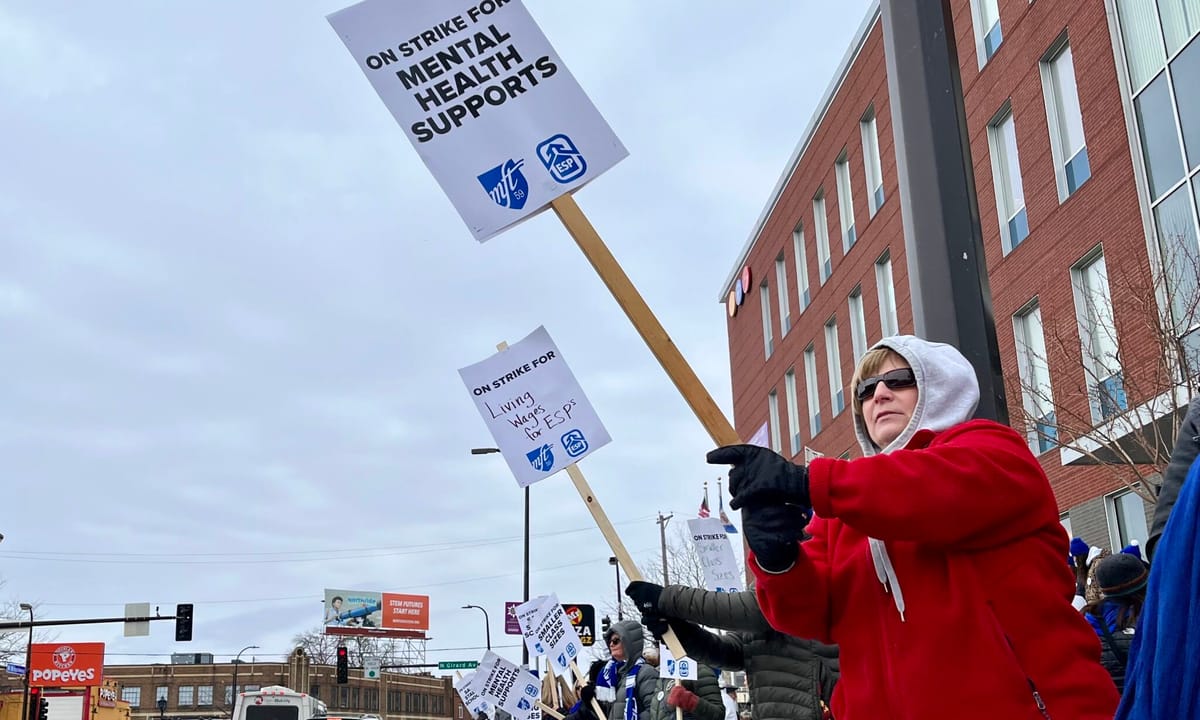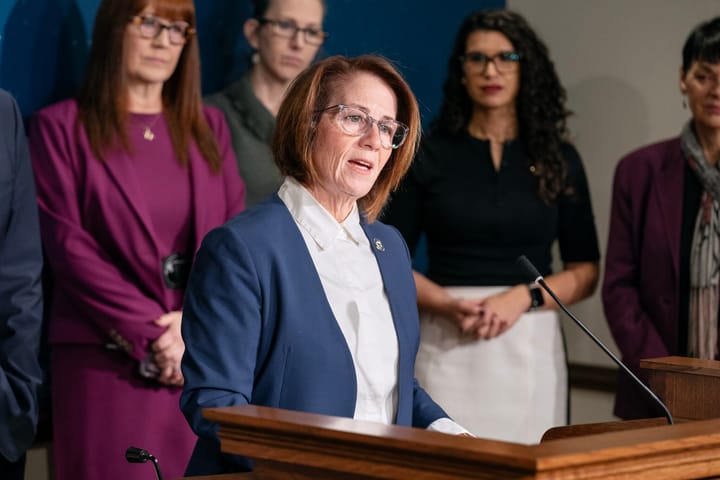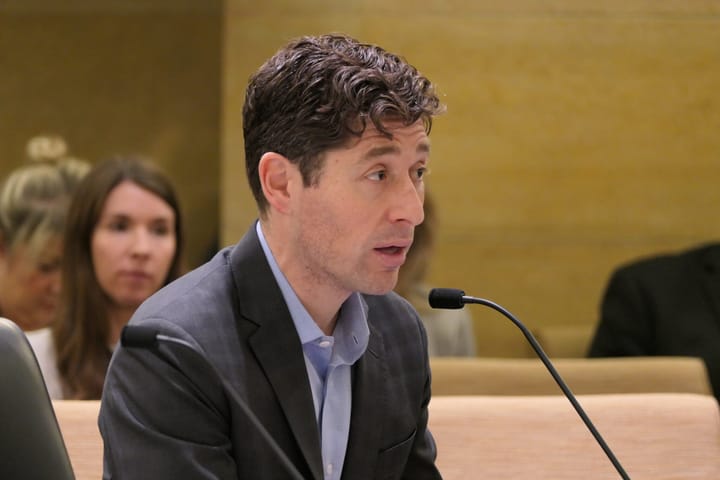Minneapolis school district on the brink of insolvency, state involvement
MPS will have to close schools and/or lay off teachers when federal pandemic funds run out

By Deena Winter, Minnesota Reformer
Declining enrollment and rising costs have pushed the Minneapolis school district to the brink of insolvency, which could lead to intervention by the Minnesota Department of Education.
If a district’s reserves — which are akin to a savings account — drop into the red too far, the state would determine that the district has fallen into what’s called “statutory operating debt.” At that point, the district must submit a plan to the state showing how it plans to get back on track or risk losing crucial state funding. The loss of state funding would put the district into a fiscal death spiral, since it accounts for more than half of its general fund revenue.
The district’s financial crisis is particularly striking given the relatively healthy local economy and increase in education funding recently passed by the Legislature.
The district’s low reserves could also hurt the district’s bond rating, increasing the cost to borrow money.
Six districts were in this financial predicament at the close of the 2022 fiscal year: two independent school districts and four charter schools. The number of districts in that category has steadily declined from a high of 59 in 1994.
The Minneapolis school district has balanced its budget for the past three years with the help of nearly $262 million in federal pandemic funds, but that money runs out late next year, leaving a huge budget hole that must be dealt with by an inexperienced school board. Five of the nine board members were seated in January, and the district is led by an interim superintendent.
“They inherited a s*** show,” said Sara Spafford Freeman, a community organizer, public schools advocate and parent of three children in the district. She has worked in finance for 20 years. “They’re going to have to take incredibly difficult steps.”
The district, which declined to make anyone available for an interview, has operated at a deficit multiple times in recent years.
The school board votes Tuesday on a proposed $976 million budget with a nearly $97 million deficit.
Once federal pandemic money is gone, the district will confront a $70 million annual gap in funding, leaving the school board little choice but to lay off teachers and/or close schools, as the district’s reserves would be wiped out by a deficit that big.
Minneapolis Public Schools’ budget director, Thom Roethke, implied during a community presentation that Minneapolis has too many schools. The district was built to serve about 40,000 students, but currently enrolls about 28,000.
Roethke pointed out that other large Minnesota districts use fewer, larger schools to reduce costs.
The district’s most recent five-year budget projection predicts an “imminent financial crisis” due to declining enrollment and a failure to cut costs. If the district’s leaders continue with the existing “footprint, practices, policies, and priorities… we expect the district to confront an unprecedented fiscal crisis in the 2024-2025 school year,” the report said.
If no action is taken, the general fund will be depleted sometime in 2025 and the district will quickly descend into the red, triggering state intervention.
“Without significant changes, MPS will run out of money during the 2024-2025 school year and be unable to operate as it does now,” the report said.
School board member Kim Ellison said during a May 23 committee meeting that the board has been told for about a half dozen years that it’s heading toward a fiscal cliff.
“If we continue on this course, this is when we’re going to be statutorily in debt, then taken over by the state,” Ellison said. “You know what we need to do.”
The district spent $3,900 more per pupil on general operating costs in 2021 than the 15 other largest districts in Minnesota, according to MPS data. According to a state education department database, Minneapolis spends over $20,000 per student in general funds.
The school board chair, Sharon El-Amin, said during the meeting the board must consider closing schools, consolidating resources and reallocating buildings, perhaps using them to house homeless people.
“No one wants to have closed school buildings in their neighborhood,” she said. “We know this is not easy. We know this is not something we can do fast. We know this is something we have to do.”
Board member Fathia Feerayarre said she can’t support closing schools unless she sees evidence it’s the best solution to the budget problems.
Families with children are leaving the city, and increasing enrollment is not a “viable strategy” to solving the district’s budget woes, according to the MPS budget forecast.
The district had a 17% decline in student enrollment between 2017 and 2022 and is expected to drop to about 23,000 students by 2027.
Because state funding is tied to enrollment, the district is losing state money when it needs it most.
The report cites as possible reasons for enrollment decline the police murder of George Floyd and ensuing civil unrest; the pandemic lockdown and a 14-day teacher strike last year.
Unmentioned in the report: Mediocre performance, at best. Only 33% of MSP students met 2022 standards in math; 42% in reading; and 33% in science, according to a state report card.
The teachers’ strike led to 5% raises over two years and $4,000 bonuses, which helped Minneapolis teachers achieve something closer to parity after earning less over time than their colleagues in St. Paul and Anoka–Hennepin. The contract worsened the district’s budget situation. Minneapolis teachers’ union officials did not respond to multiple requests for comment.
School board member Lori Norvell said at the committee meeting that the board has used “a lot of Band-Aids to patch things” over the years, but must become financially stable.
“We’ve got a lot of deep issues,” she said. “We’ve got some things on fire that we need to take care of.”
Minnesota Reformer is part of States Newsroom, a network of news bureaus supported by grants and a coalition of donors as a 501c(3) public charity. Minnesota Reformer maintains editorial independence. Contact Editor Patrick Coolican for questions: info@minnesotareformer.com. Follow Minnesota Reformer on Facebook and Twitter.



Comments ()